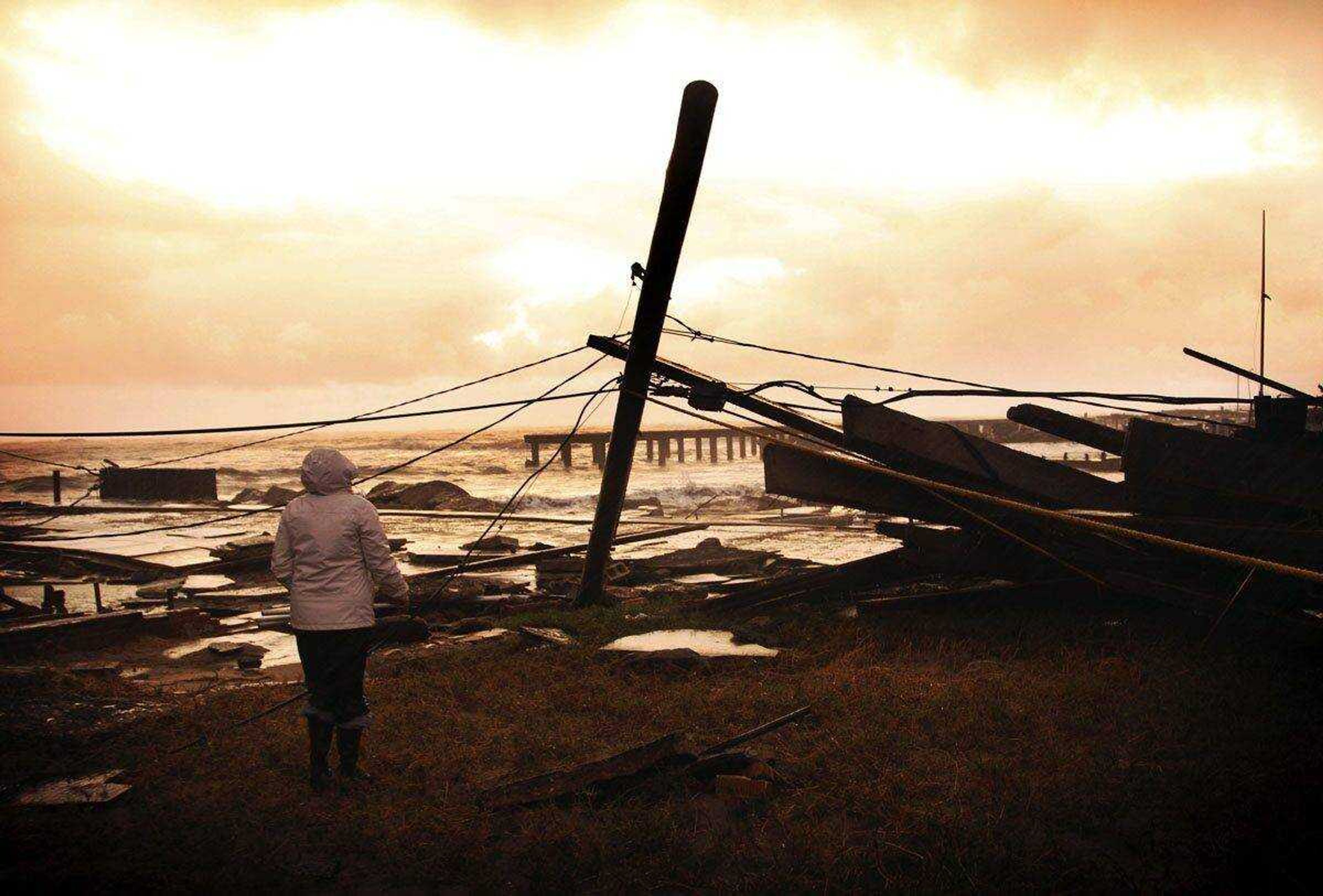NEW YORK -- Civilization came roaring back Tuesday in the form of emergency response, recharged cellphones and the reassurance brought by daylight. It came after superstorm Sandy's howling winds and record tidal surges late Monday shoved water over seaside barriers into low-lying areas.
Millions of people from the Carolinas to Maine awoke without electricity, and an eerily quiet New York City was all but closed off by car, train and air as the superstorm steamed inland, delivering punishing wind and rain.
"Oh, Jesus. Oh, no," Faye Schwartz said she looked over her neighborhood in Brooklyn, where cars were scattered like leaves.
Reggie Thomas, a maintenance supervisor at a prison near the overflowing Hudson River, emerged from an overnight shift to find his Honda with its windows down and a foot of water inside. The windows automatically go down when the car is submerged to free drivers.
"It's totaled," Thomas said with a shrug. "You would have needed a boat last night."
By Tuesday evening, the remnants of Sandy were about 50 miles northeast of Pittsburgh, pushing westward with winds of 45 mph. It was expected to make a turn north into New York state and Canada overnight.
Although weakening, the storm will continue to bring heavy rain and flooding, said Daniel Brown of the National Hurricane Center in Miami. Sandy will be joining another, more wintry storm -- a confluence of weather systems that earned it nicknames like "superstorm" and, on Halloween eve, "Frankenstorm."
In its wake, Sandy left unforgettable scenes of devastation.
The storm off barrier islands in New Jersey, swept houses from their foundations and washed amusement pier rides into the ocean. It also wrecked several boardwalks up and down the coast, tearing away a section of Atlantic City's world-famous promenade.
At the ground zero construction site in lower Manhattan, seawater rushed into a gaping hole under harsh floodlights.
In Queens, N.Y., rubble from a fire that destroyed as many as 100 houses in an evacuated beachfront neighborhood jutted into the air at ugly angles against a gray sky.
In heavily flooded Hoboken, N.J., across the Hudson River from Manhattan, dozens of yellow cabs sat parked in rows, submerged in murky water to their windshields.
"We are in the midst of urban search and rescue. Our teams are moving as fast as they can," New Jersey Gov. Chris Christie said. "The devastation on the Jersey Shore is some of the worst we've ever seen. The cost of the storm is incalculable at this point." Some analysts speculated Sandy will end up causing about $20 billion in property damage and $10 billion to $30 billion more in lost business, Sandy likely will be one of the most costly natural disasters on record in the U.S., according to IHS Global Insight, a forecasting firm.
This much is clear:
* The U.S. death toll was at least 50; many victims of falling trees.
* More than 8.2 million people in 17 states -- Michigan being the farthest west -- were without power.
* Airlines had to cancel more than 15,000 flights around the world.
* Water flooded two major commuter tunnels and seven subway tunnels under the East River,
* The storm disrupted the presidential campaign with just a week until Election Day.
New York City Mayor Michael Bloomberg said it was unclear when the nation's largest transit system -- the liefblood of more than five million residents --would be rolling again.
"Nature," Bloomberg said, "is an awful lot more powerful than we are."
Joseph Lhota, chairman of the Metropolitan Transportation Authority, said damage was the worst in the 108-year history of the New York subway.
Consolidated Edison said it could take at least a week to restore electricity to the last of the nearly 800,000 customers in and around New York City.
Lower Manhattan, which includes Wall Street, was among the hardest-hit areas after the storm sent a nearly 14-foot surge of seawater, a record, coursing over sea walls and highways. The New York Stock Exchange was closed for a second day, the first time that has happened because of weather since a blizzard in 1888. It will reopen Wednesday.
A construction crane that collapsed in the high winds on Monday still dangled precariously 74 floors above the streets of midtown Manhattan, and hundreds of people were evacuated as a precaution. On Staten Island, a tanker ship wound up beached on the shore.
Most major tunnels and bridges in New York were closed, as were schools, Broadway theaters and the metropolitan area's three main airports, LaGuardia, Kennedy and Newark.
In a measure of the storm's size and power, waves on southern Lake Michigan rose to a record-tying 20.3 feet. High winds spinning off Sandy's edges clobbered the Cleveland area Tuesday, uprooting trees, cutting power to hundreds of thousands, closing schools and flooding roads along Lake Erie.
Sandy also brought blizzard conditions to parts of West Virginia and neighboring Appalachian states. Portions of the West Virginia mountains were blanketed with at least two feet of snow by Tuesday afternoon. Drifts four feet deep were reported at Great Smoky Mountains National Park on the Tennessee-North Carolina border.
Sandy killed 69 people in the Caribbean before making its way up the Eastern Seaboard.
With Election Day a week away, the storm's aftermath threatened to affect the presidential campaign. Poll access and voter turnout, both of which hinge upon how people are affected by the storm, could shift the outcome of an extremely close race.
President Barack Obama canceled a third consecutive day of campaigning, scratching events scheduled for Wednesday in swing state Ohio, to monitor the situation. GOP nominee Mitt Romney resumed his campaign, giving brief remarks during a planned political rally in Ohio that his campaign re-branded as a "storm-relief event."
Connect with the Southeast Missourian Newsroom:
For corrections to this story or other insights for the editor, click here. To submit a letter to the editor, click here. To learn about the Southeast Missourian’s AI Policy, click here.







